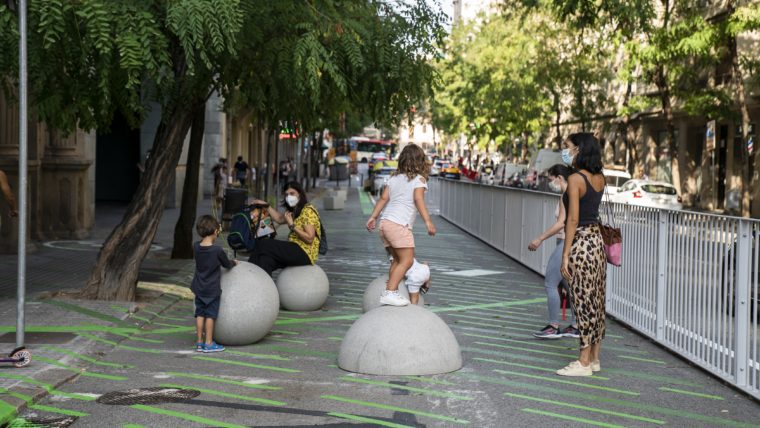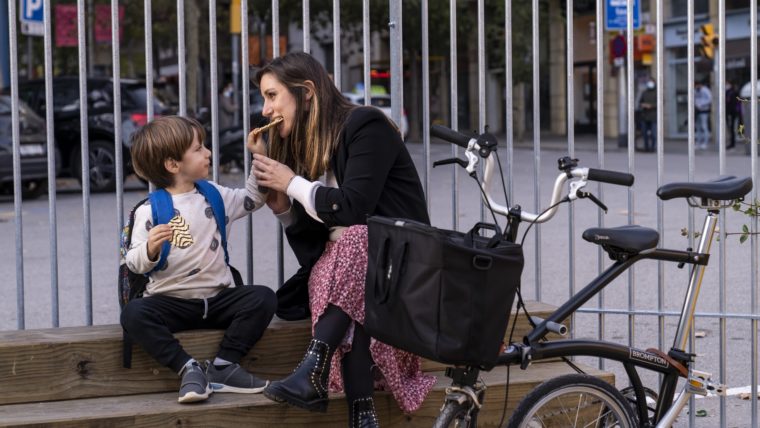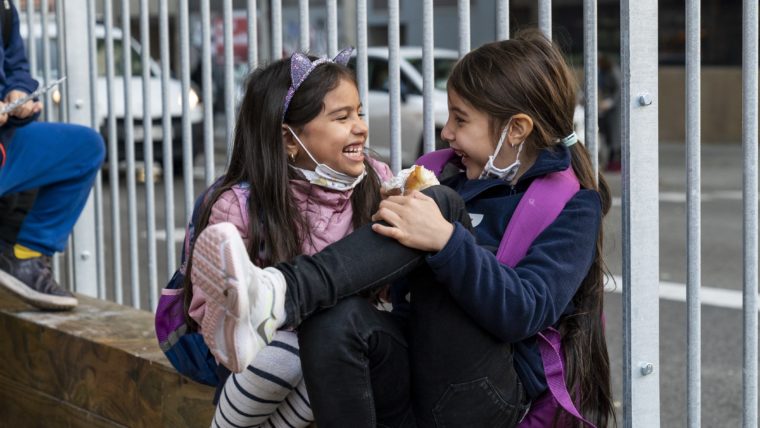Work gets under way at the 75 schools to be protected from traffic in 2021
With the school year over, July sees the start of work around 75 schools, which will have safe and healthy access areas by the end of the year. Most of the work at 56 schools will be carried out in the summer holidays, with the rest to be completed before the year is out. Following the improvements carried out in 2020 and those planned for 2021 and 2022, the programme to protect the city’s schools should reach a total of 155 schools, benefitting over 58,000 students.
An extension of school
The new spaces to be created help towards improved organisation when students access and leave school, with local residents also benefitting from the space gained. The work already carried out to introduce traffic-calmed areas outside 26 schools has actually been very well received, becoming an extension of the school in public space.
The changes also mean a shift in priorities in the use of public space. The work carried out in 2020 and planned for 2021 means improved access at 101 schools, doing away with 14 lanes of traffic and giving pedestrians priority in a further 17 streets. In all, the changes will win back 14,150 square metres of asphalt, which will be used for people to spend time in, with benches and play elements. This surface area is equivalent to an entire block in L’Eixample.
Projects for 2022 are being defined with the schools themselves, through a participatory process to produce the final project. More action may be added in the districts in the coming months, increasing the number of schools to benefit next year.
Safe places, full of life
Schools are hubs through which a greener, friendlier and more play-based urban model can be consolidated. By taking cars away from outside schools we can move towards a healthier city which is safer for children. When traffic and schools are kept further apart, accidents, pollution and noise suffered by families are all reduced. The space gained offers a meeting point, a safe place where children can play and where people can share neighbourhood life.
An assessment is being made this year in collaboration with ISGlobal, looking at changes made at nine pilot schools and analysing the effect of work on health and welfare and the changes brought about in the quality and use of public space. In addition, the Public Health Agency will be studying the impact of these transformations in terms of social interaction and spontaneous play among children.
Full and updated information on the work carried out, along with a map of the schools involved, can be found at www.barcelona.cat/protegimescoles.













